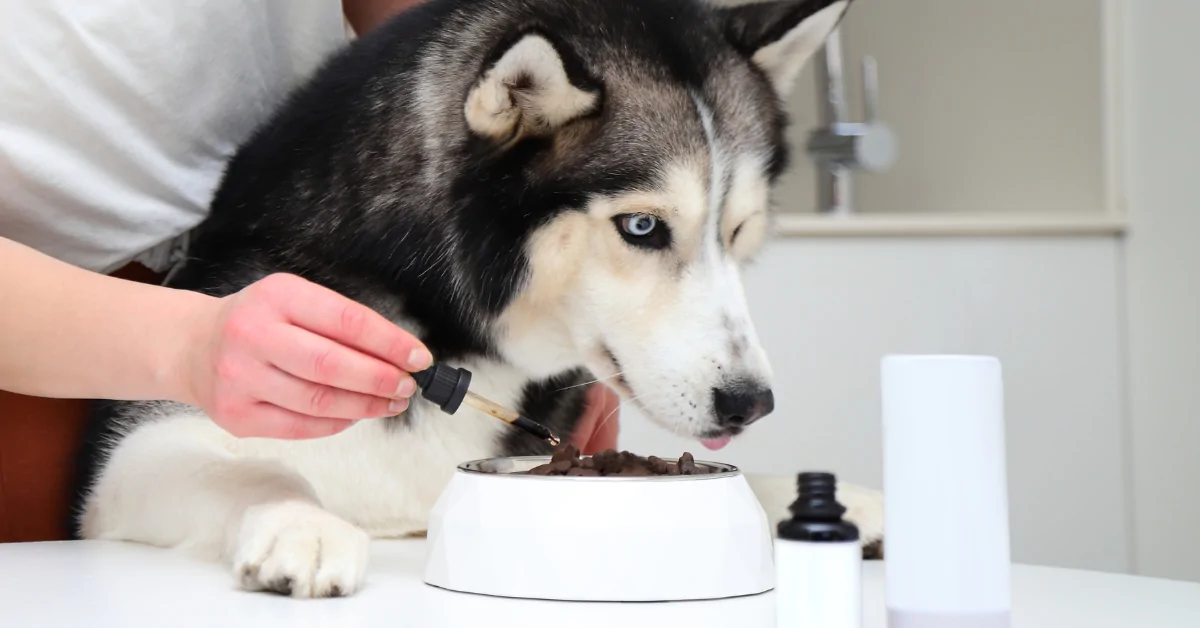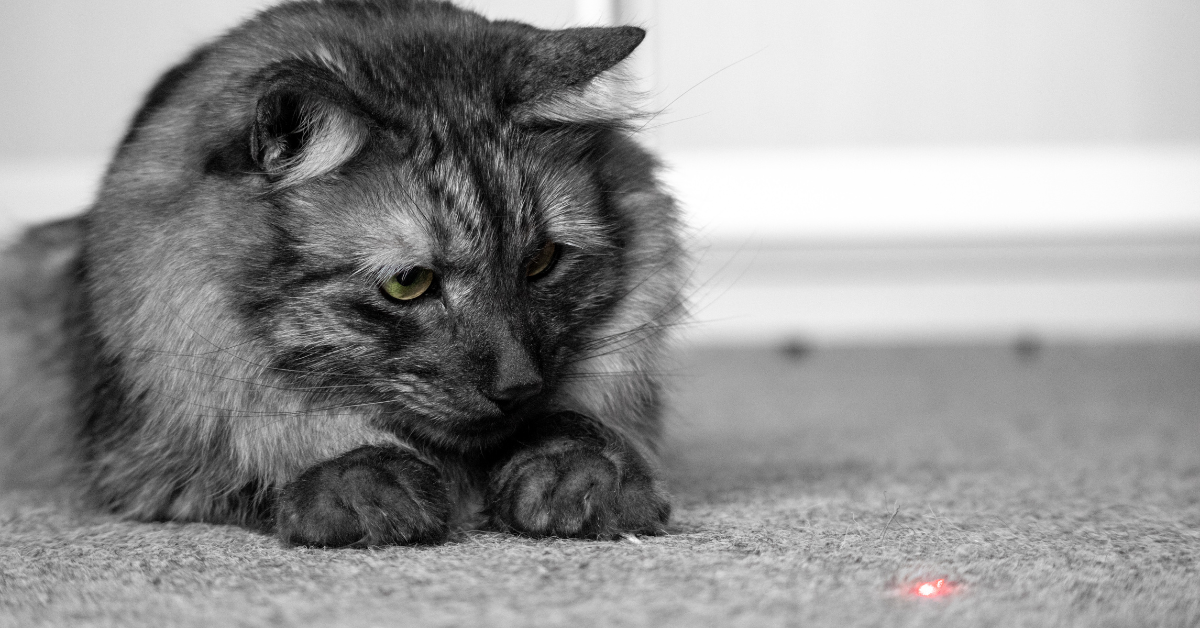It’s a shock the first time she does it – and a worry when she keeps doing it! Plus it’s definitely smelly!! Why would she do this to you?
Any time a cat urinates anywhere other than the litter box in your home, such as on your clothes or carpet, your immediate response should be to see if there’s a medical problem. The vet should do a physical exam and diagnostic tests, including urinalysis, to see if the cause could be one of the following issues.
Top Reasons Why Cats Pee On Beds
Urinary Tract Infection (UTI)

Feline Idiopathic Cystitis (FIC)
FIC is the diagnosis whenever the cat has lower urinary tract disease but no underlying cause is found (about 55% of cases). If a cat has recurrent UTIs after taking antibiotics, the real problem may be Feline Idiopathic Cystitis – and it is difficult to treat; your cat may experience frequent relapses. Treatment may include dietary adjustment, stress reduction techniques and medications.
Bladder Stones (Uroliths)
Uroliths must be diagnosed by the vet, who will tell you if your cat’s bladder stones are caused struvite or calcium oxalate crystals. The type of crystals determine the appropriate treatment (dietary or surgical).
Litter Box Issues
Your cat could be peeing everywhere except in the litter box because she’s having serious issues with the current litter box. Here are some issues your cat might have with the litter box that has caused her to urinate on your bed:
She doesn’t like the location of the box. It might be in an inconvenient spot like the basement, in a too-enclosed space or a dark space like a closet, in an area with high foot traffic or near where the dog sleeps, next to a noisy clothes dryer, or any number of reasons. Try changing the location or, simply putting another litter box in a more cat-friendly location and see which one she prefers.
- She needs more litter boxes. Do you have another cat? Maybe she doesn’t want to share. This is not at all unusual with cats. Have a litter box for each cat, plus one more on each level of the home.
- She wants a clean litter box. It should be cleaned at least once a day. Most cats just don’t like to use a dirty litter box. Once a week, rinse the box out with baking soda or unscented soap. If you’re using a self-cleaning litter box and your cat starts urinating outside the box, try switching to a traditional type of litter box.
She wants another type of litter box. Is it large enough? Does it have a cover that traps odors or constricts her movement within the box? Many cats do not like the claustrophobic effect of a covered litter box. You may want to experiment—move the cover so that it only partially covers a small area the litter box and see if behavior improves. If it does, you can very gradually move the cover a little bit each week. Are the sides too tall, making it hard to get in and out of? Tall sides are harder for an older cat. Does it have a plastic liner that prevents her from digging and burying her business and gets tangled up in her paws or claws?
- She hates the cat litter. She may feel like it’s not soft enough (especially if she’s been de-clawed) or absorbent enough. Studies have shown that most cast prefer finely ground substrate, such as clumping clay litter. Many cats prefer the litter to be unscented. Remember, they smell so much better than we do! Put yourself in their paws! Try out several types of litter—there certainly is a large number of types to choose from and go with the winner. Also, most cats like the litter to be fairly shallow – 1-2 inches deep rather than deeper…who knew?
Emotional Issues
Sometimes the reason a cat pees in your bed could be more emotional than physical. Feline idiopathic cystitis is a condition caused by hormonal or chemical imbalances that result from stress or anxiety in the cat’s environment. Here are some things to consider:
Has there been a major change at your house? Some examples: A new baby, a new pet, a change in your own schedule that keeps you from being home as much, or, one of the more common, moving to a new house. Any of these and other changes can trigger a feeling of insecurity, fear or anxiety – and your cat may express her unhappiness by soiling your bed.
- Cats have excellent memories. She may remember when something happened in her litter box to upset her. So avoid using the litter box as a convenient place to trap your cat in order to give her medicine, trim her nails, punish her for unacceptable behavior, etc., as it will stay in her mind as a negative place that she wants to avoid. Note: If she had a painful experience in defecating due to constipation, that could be another reason to not like the litter box.
- Is your cat stressed out? If you think anxiety or stress-related situations are behind your cat peeing in your bed, spend more time with her to make her feel loved and secure. Alleviate situations where she has to compete for litter box space, food and water, and other items with other pets in your house. Improve her environment by placing perches near your windows, increase the number of scratching posts, etc.
Other Assorted Issues
- Cats Pee Where Cat Pee Is Still Present. Cat owners know that a cat will return to pee in any area that smells like urine. So…you’ll need to thoroughly clean any place where she has urinated outside the litter box, including your bed.
Make Your Bed Uninviting. You’ll want to make it less attractive to pee in your bed. You can change your comforter to something she doesn’t find as irresistible, or cover it with something like a shower curtain (when you’re not sleeping in it) to make it feel strange and non-absorbent.
- Change her mental image of your bed as a place to pee. Make it the place you play with her or feed her treats. The idea is to alter her perception of what the bed is for. And cats don’t usually urinate where they eat.
- Do NOT punish your cat for peeing in the bed. It exacerbates her tendency to become anxious or insecure.
Don’t clean up accidents with an ammonia-based cleanser. Doing so will just make it more attractive, since urine contains ammonia. Use an enzymatic cleanser designed to neutralize pet odors or apple cider vinegar is good stand-by.
- You can always close the bedroom door and not allow the cat in. Simple but effective and can quickly restore peace, confidence and no more urine smell to your house.
- Go back to the vet if your efforts aren’t working. Check again for a physical problem. Talk to your vet about whether it makes sense to give your cat anti-anxiety medication.
Summary
It takes a while to re-train your cat to not urinate on your bed. It could take a month or more, so be patient and creative in finding the right solution for your beloved kitty.
In the meantime, you can learn more about how to keep your pointy-eared buddy happy and healthy through our cat blog or cat page! We hope you found this article helpful and if your cat ever gets any cuts, abrasions, ear infections or ringworm, we hope you keep Banixx Pet Care in mind.
Sources
- https://www.petmd.com/cat/slideshows/5-reasons-your-cat-peeing-bed
- https://www.petmd.com/blogs/fullyvetted/2011/nov/common_medical_causes_inappropriate_urination-11994
- https://www.petmd.com/blogs/fullyvetted/2011/dec/prevention_monitoring_feline_urinary_issues-12228
- https://www.vetstreet.com/our-pet-experts/why-does-my-cat-pee-on-my-bed
- https://www.aspca.org/pet-care/cat-care/common-cat-behavior-issues/urine-marking-cats
- https://www.aspca.org/pet-care/cat-care/common-cat-behavior-issues/litter-box-problems
- https://www.petmd.com/cat/conditions/urinary/c_ct_lower_urinary_tract_infection_bacterial
Share this Post
Featured Post
Recent Posts
Lipomas….mysterious Lumps & Bumps on your pup…When should I worry? What should I do about them?

Managing the Mamas –Part 2 –The development process

Managing the Mamas: Part 1 – Preparing to Breed Your Mare

HOW MANY TOES?? Caring for the Polydactyl Cat

Do Dog Joint Supplements Actually Work?


 She doesn’t like the location of the box. It might be in an inconvenient spot like the basement, in a too-enclosed space or a dark space like a closet, in an area with high foot traffic or near where the dog sleeps, next to a noisy clothes dryer, or any number of reasons. Try changing the location or, simply putting another litter box in a more cat-friendly location and see which one she prefers.
She doesn’t like the location of the box. It might be in an inconvenient spot like the basement, in a too-enclosed space or a dark space like a closet, in an area with high foot traffic or near where the dog sleeps, next to a noisy clothes dryer, or any number of reasons. Try changing the location or, simply putting another litter box in a more cat-friendly location and see which one she prefers. She wants another type of litter box. Is it large enough? Does it have a cover that traps odors or constricts her movement within the box? Many cats do not like the claustrophobic effect of a covered litter box. You may want to experiment—move the cover so that it only partially covers a small area the litter box and see if behavior improves. If it does, you can very gradually move the cover a little bit each week. Are the sides too tall, making it hard to get in and out of? Tall sides are harder for an older cat. Does it have a plastic liner that prevents her from digging and burying her business and gets tangled up in her paws or claws?
She wants another type of litter box. Is it large enough? Does it have a cover that traps odors or constricts her movement within the box? Many cats do not like the claustrophobic effect of a covered litter box. You may want to experiment—move the cover so that it only partially covers a small area the litter box and see if behavior improves. If it does, you can very gradually move the cover a little bit each week. Are the sides too tall, making it hard to get in and out of? Tall sides are harder for an older cat. Does it have a plastic liner that prevents her from digging and burying her business and gets tangled up in her paws or claws? Has there been a major change at your house? Some examples: A new baby, a new pet, a change in your own schedule that keeps you from being home as much, or, one of the more common, moving to a new house. Any of these and other changes can trigger a feeling of insecurity, fear or anxiety – and your cat may express her unhappiness by soiling your bed.
Has there been a major change at your house? Some examples: A new baby, a new pet, a change in your own schedule that keeps you from being home as much, or, one of the more common, moving to a new house. Any of these and other changes can trigger a feeling of insecurity, fear or anxiety – and your cat may express her unhappiness by soiling your bed. Make Your Bed Uninviting. You’ll want to make it less attractive to pee in your bed. You can change your comforter to something she doesn’t find as irresistible, or cover it with something like a shower curtain (when you’re not sleeping in it) to make it feel strange and non-absorbent.
Make Your Bed Uninviting. You’ll want to make it less attractive to pee in your bed. You can change your comforter to something she doesn’t find as irresistible, or cover it with something like a shower curtain (when you’re not sleeping in it) to make it feel strange and non-absorbent. Don’t clean up accidents with an ammonia-based cleanser. Doing so will just make it more attractive, since urine contains ammonia. Use an enzymatic cleanser designed to neutralize pet odors or apple cider vinegar is good stand-by.
Don’t clean up accidents with an ammonia-based cleanser. Doing so will just make it more attractive, since urine contains ammonia. Use an enzymatic cleanser designed to neutralize pet odors or apple cider vinegar is good stand-by.